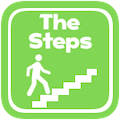

Most language learners are accustomed to simple repetition as a technique; you listen to the model phrase or sentence and then you try to reproduce it word for word. Shadowing, though similar, takes this old method to a whole new level. In shadowing, the learner tries to follow or “shadow” the model speaker as closely as possible. There is no phrase by phrase pausing, just continuous input and output. As the learner shadows, she or he matches the model speaker’s pronunciation, intonation, cadence, rhythm etc. as closely as possible.

The key advantage to shadowing is that it forces the learner to stay focused and concentrate on the content. In order to shadow successfully, one has to anticipate what is coming next. And this is where the magic happens. As you practice, subconscious processes kick in and help your brain work more efficiently in making these predictions. Our brains are “essentially prediction machines” (Clark, 2013, p. 181; see also Bubic et al., 2010) and as such are constantly seeking to find the most efficient paths to the right predictions. For language learning that path is an understanding of the underlying structure and grammar. So the learner gains a deeper grasp of the target language as well as making it more accessible. Normally, this kind of subconscious learning only takes place when a learner is immersed in the target language environment where she or he is forced to use the target language in meaningful contexts. As many experts have pointed out, deep learning or “acquisition” of a second language is a product of a subconscious process. The linguist, Stephen D. Krashen, one of the foremost experts in the field of second language acquisition goes as far to claim that linguistic competence is only improved when language is subconsciously acquired.

But enough about the theory, let me help you start putting this technique into practice. To get started, you’ll need some earphones and an audio recording at your level of competency along with a transcript. If you want to learn Japanese, this site provides all of these (except the headphones), plus the “Shadowing App” (Be sure to check out one of the sample lessons later). The shadowing app gives the user full control over the audio with the ability to adjust the length of pauses between phrases, playback speed, and number of repetitions of each phrase and more.

❶Try to listen to the audio once without the text. If you have no idea what’s going on, you may want to try something a little easier. Look for something that’s a little hard but you have a general idea of what is being said.
❷Listen a few more times and use context as much as possible to make sense of the content.
❸Listen to the audio while reading the transcript; look up any words you cannot figure out from context.
❹Follow the text and repeat the audio with a minimum delay. Repeat this process and gradually wean yourself from the text while working towards matching the speed of the audio. You know that you have practiced enough when you have virtually learned the text by heart.
❺Finally, it’s a good idea to go back and intermittently review previously mastered texts to reinforce those connections you have made to maintain what you have learned.

As I pointed out above, there is no wasting time with this method. If you are like me, your mind will surely wander with most language learning methods. You’ll find yourself drifting off into thought about anything but the language you are trying to learn and you constantly have to motivate yourself to concentrate. Not so with shadowing; it demands hyper-focus. Your full engagement will get you understanding and speaking the second language in no time.
Try it for a few days. If you follow these steps outlined here, I guarantee you will make progress.
Good luck with your studies!
さくら
Great program so far, but
Where do I find the Shadowing App to download?
For example, it is not on the Apple App Store.
Hi there! The shadowing app is an HTML5 Web app. It runs within your browser, so there is no need to install any app from the App Store or the Google Play store. I hope this explains things. Let me know if you have any further questions.
Thanks for the feedback!
Cheers!
Sakura